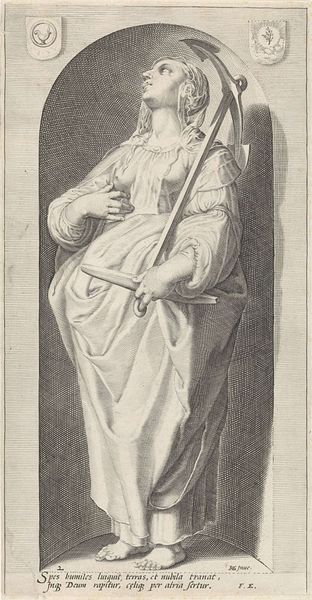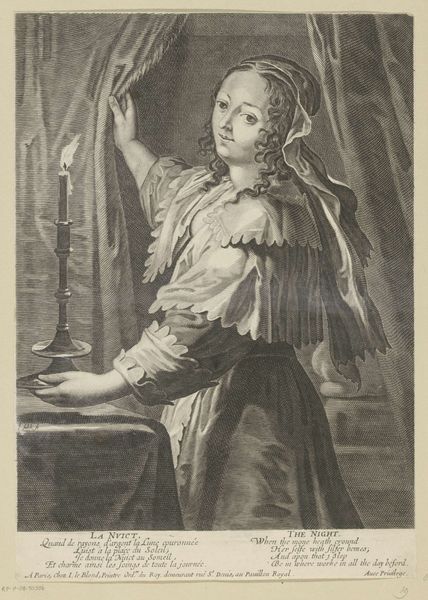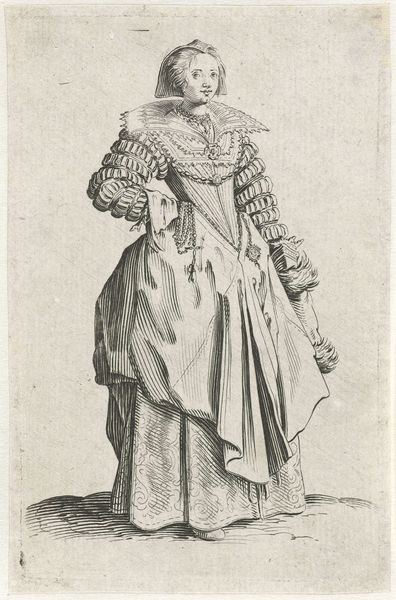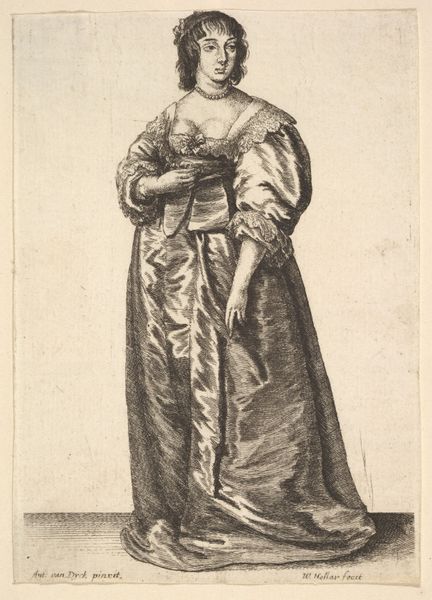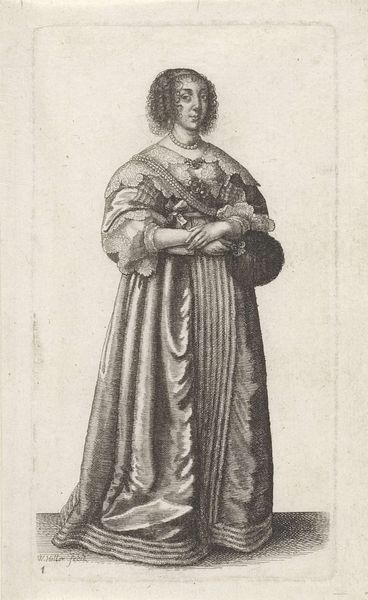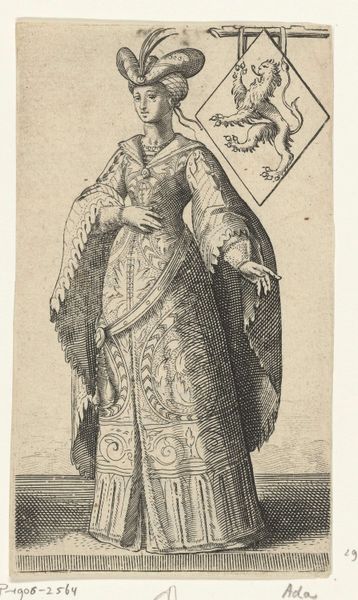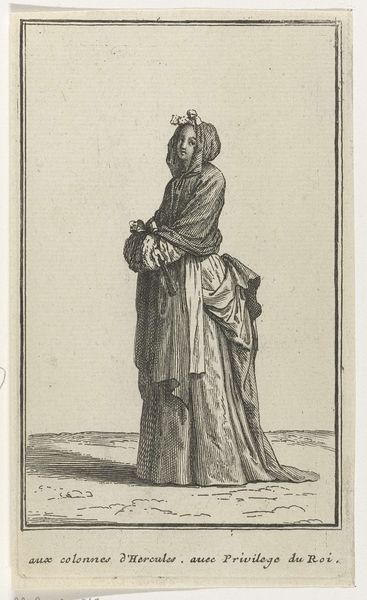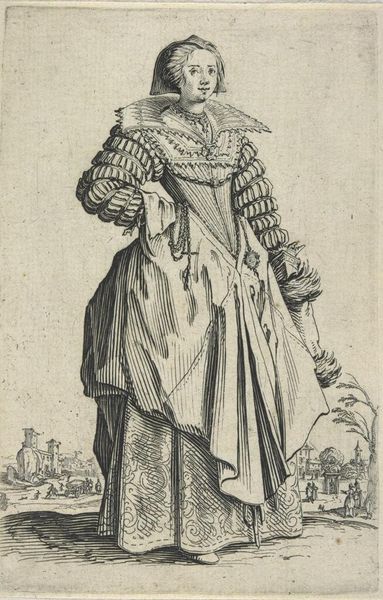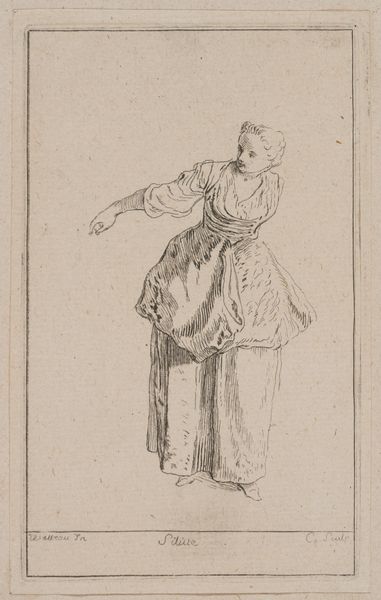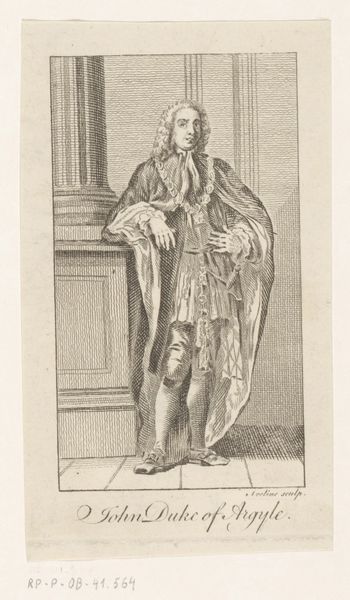
engraving
#
portrait
#
baroque
#
portrait drawing
#
history-painting
#
engraving
Dimensions: height 461 mm, width 293 mm
Copyright: Rijks Museum: Open Domain
Curator: Let's delve into this engraving, "Heilige Fredericus (I) van Utrecht," made before 1650 by Frederick Bloemaert. As a materialist, the first thing I notice is the stark contrast inherent in the engraving process itself. The labor required to produce the copper plate, the skill involved in wielding the burin, and the number of prints that could then be made and disseminated-- these are all critical aspects that shift our understanding away from solely religious interpretation and toward understanding it as a product of labor. Editor: It’s currently housed in the Rijksmuseum. At first glance, it has a serious and reverent atmosphere due to the way Fredericus is portrayed. How do you interpret this work, considering the print medium and its distribution? Curator: Consider how engravings democratized imagery in the 17th century. Bloemaert’s engraving of Fredericus allowed for widespread visual consumption and veneration, but importantly, it also generated an income stream for the artist, the publisher, and the distributors involved in its creation and distribution. It challenges the traditional boundaries between high art and craft. I'm also interested in the material used for his garments. What statements were made by the textile or adornments, such as the clasp? How would such regalia have been accessed? Editor: That makes me wonder about the artistic labor of reproducing a painting or other source material as an engraving. Is it considered less "artistic" because it's reproductive work, or does the skill and the accessibility it provides outweigh that? Curator: Precisely. We are speaking of layers of consumption, both physically (purchasing the artwork) and metaphorically (understanding of this Saint's position). Was it affordable for all, or designed for a select clientele who understood the material value depicted and used to spread Frederic's ideology to the masses? Consider that the paper, ink, and printing press represent tangible materials and economic investments that allowed Bloemaert's Fredericus to exist and circulate within a specific socioeconomic context. This makes visible the political economy within the art of this time. Editor: I hadn't considered all of the factors involved. This approach really expands my appreciation of Baroque art. Curator: Absolutely. Looking at the art and process of the art through a materialist lens uncovers so much.
Comments
No comments
Be the first to comment and join the conversation on the ultimate creative platform.
